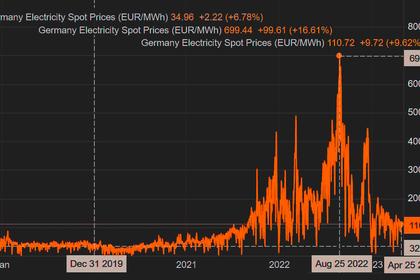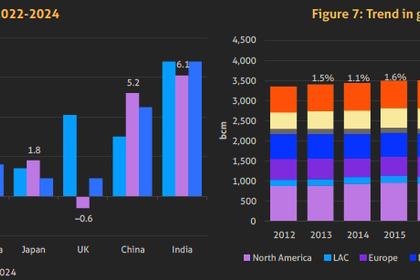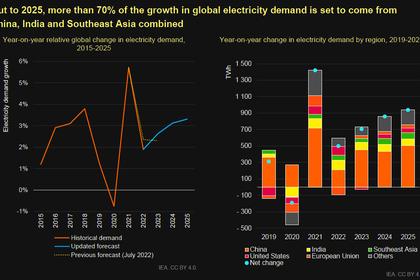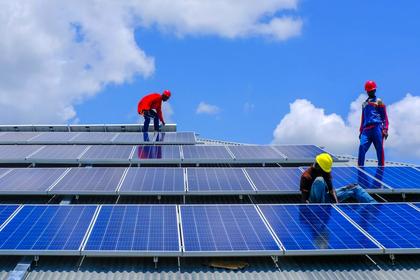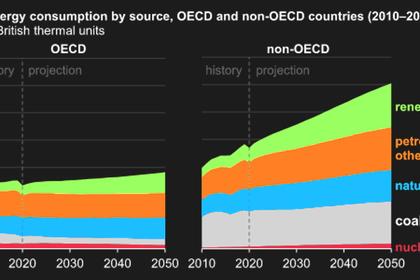
GLOBAL CLIMATE SCAM

EMW - May 20, 2023 - by MITCHELL BEER
The next few months or couple of years might decide whether the latest scam blocking the path to a decarbonized future gains traction or crashes under its own weight.
The word for the day is “abatement”, and the success of the global fight to get climate change under control might hinge on how seriously governments, investors, international agencies, and other big influencers embrace it as a path to real emission cuts. And, ultimately, on whether abatement technologies can deliver the emission cuts they promise.
Industrial carbon capture and storage (CCS) is in the midst of an extended moment. It’s a realistic way to get climate pollution under control, if you believe the spin, or the latest excuse to keep on increasing oil and gas expansion, emissions be damned, if you follow the evidence. It’s receiving serious attention from decision-makers and serious subsidies from governments. And it’s shaping up as a centrepiece of the fossil industry’s negotiating strategy at this year’s United Nations climate conference, COP 28, hosted by the oil-rich United Arab Emirates November 30-December 12.
“We must be laser focused on phasing out fossil fuel emissions, while phasing up viable, affordable, zero-carbon alternatives,” declared COP 28 President Sultan al Jaber, CEO of both the Abu Dhabi National Oil Company (ADNOC) and renewable energy powerhouse Masdar, during the annual Petersberg Climate Dialogue in Berlin earlier this month. That statement “was widely interpreted to mean using carbon capture and storage technology to capture CO2 emissions, and not completely phasing out fossil fuels themselves,” the Guardian reported.
On one level, the new obsession with CCS shows how far the public and policy debate on climate change and climate solutions has advanced. In just a few years, the fossil lobbyists and publicists who outright dismissed the reality of the climate emergency and poured lavish budgets into climate denial have realized those positions will no longer pass in polite company.
That’s why they’ve pivoted from climate denial messaging that won’t fly to carbon capture technology that won’t work. Certainly not widely, quickly, or comprehensively enough to deliver the results we need.
Whatever You Do, Don’t Stop Digging
That’s where the language of “abatement” comes in. Sure, we take climate change seriously, they’ll say (even with some CCS publicists now ridiculously touting 2050 as a more important emissions reduction deadline than 2030). Of course, we want to be a part of the solution (as long as we can count on lavish taxpayer subsidies for techniques that only capture about 20% of the emissions in a barrel of oil).
The underlying logic of abatement says that if you’re in a hole, whatever you do, don’t stop digging—just hold out the hope of a new wonder technology that will allow you to keep on extracting oil, gas, and coal. It’s like a macabre game of musical chairs, where anyone left standing when the music stops gets tossed over the edge into a maelstrom of wildfires and heat waves, drought and starvation, killer storms and sea level rise.
Except that CCS technology will never have to deliver on its outsized promises to serve its immediate purpose. It just has to give the fossil industry political cover to keep on signing contracts and increasing production for a few more years.
Until the music stops.
CCS Isn’t Delivering
It’s well established that carbon capture technology isn’t delivering. Last fall, when the Institute for Energy Economics and Financial Analysis looked into the world’s 13 “flagship, large-scale” CCS projects, representing about 55% of global carbon capture capacity, it found that seven of the 13 projects underperformed, two failed outright, and one had to be mothballed.
To state the blindingly obvious, 10 out of 13 is not a failure rate that anyone should be proud of.
Together, these innovative, world-leading, dare I say world-saving projects captured 39 million tonnes of CO2 per year, IEEFA said—about one one-thousandth of the 36.3 billion tonnes that emitters spewed into the atmosphere in 2021.
“Many international bodies and national governments are relying on carbon capture in the fossil fuel sector to get to net-zero, and it simply won’t work,” report author Bruce Robertson said at the time. While there is “some indication it might have a role to play in hard-to-abate sectors such as cement, fertilizers, and steel, overall results indicate a financial, technical, and emissions reduction framework that continues to overstate and underperform.”
What the pitiful performance of CCS projects does not do is give fossil companies a continuing licence to pollute. Particularly when, as recently as January, 2021, 81% of the carbon taken out of the atmosphere via CCS was being injected underground to help fossils extract more oil.
Accidentally, I’m sure, the Global CCS Institute reinforced IEEFA’s analysis. In a triumphant release last fall, the industry body reported record interest in new project development, driven by rising carbon prices and government subsidies. But even if all of the projects are completed—and even if they meet their targets when they go into operation—they’ll still capture just 244 million tonnes of carbon dioxide per year, still less than 1% of humanity’s annual carbon pollution.
Look no farther than the appropriately-named Gorgon CCS project in Australia for a measure of how far this technology is from prime time. (Just don’t look too closely unless you want to be turned to stone.) Colossal fossil Chevron brought the plant online in 2019 with high hopes of capturing a scintillating four million tonnes of carbon dioxide per year, or about one hour’s worth of global emissions in 2021. It’s still sitting at one-third of capacity, and Bloomberg News reported this week that it’ll be years before that changes.
David Fallon, Chevron Australia’s general manager energy transition, said the project, one of the largest of its kind in the world, will need new investment to boost its performance. “We will not hide from the fact that it’s not perfect,” he said, showing a gift for understatement that his industry’s PR people would do well to learn from.
How Gullible Can Investors Be?
So the real question is how long it will be before the marketing spin on CCS starts to catch up with the industry that produces the lion’s share of the world’s carbon pollution, while continuing to pollute the international climate negotiations meant to get the problem under control. Without massive breakthroughs in technology, cost, and reliability that the industry hasn’t been able to achieve through 50 years of CCS development, the success of the abatement message will depend on two questions:
- How many tens or hundreds of billions in subsidies do the world’s wealthier governments want to pour into a technology that only captures 20% of the emissions it’s supposed to address, particularly when competing energy efficiency, renewable energy, and energy storage options are cheaper, practical, and visibly ready for prime time?
- How gullible can private investors be when they’re presented with an opportunity as obviously excellent as CCS, and for how long?
It’ll be a while before those answers sort out. But it’s fairly easy, actually, to imagine this ending well.
Even in a cascading climate emergency, it’s probably too much to expect governments to just declare the obvious and bust the myth that CCS is a realistic way to control emissions. Despite a devastating early wildfire season, the New York Times reported this morning that climate change is still a third rail that no politician will touch in the middle of a provincial election. In the United States, a byzantine and deeply undemocratic electoral college system has given coal state Senator Joe Manchin (±D-WV) a stranglehold on climate policy since 2021.
But there’s a gap between what governments say and what they do on CCS subsidies, just as surely as there is on real climate solutions. Finance Minister Chrystia Freeland’s latest budget has its share of rhetorical support for CCS, and the money to back those words may yet flow. So far, though, the budget has the fossil lobby craving “certainty” and complaining that Ottawa is” kicking the can down the road” on CCS investment.
In Canada, at least, the subsidies on offer are enough to give the government political cover, but not sufficient to get an obscenely profitable industry investing in what it sees as its own future.
So if the industry’s end goal is to keep fossil investment behemoths like the Royal Bank of Canada at the table by telling them what they want to hear, the pickings are getting pretty slim. The federal government is onboard in theory, but not so much in practice. International agencies and modelling shops are skeptical enough about large-scale CCS that fossils can only quote those credible sources by wilfully misinterpreting them.
And now, with this year’s UN climate negotiations still 6½ months away, heavy hitters like U.S. climate envoy John Kerry, German lead negotiator Jennifer Morgan, and the iconic former UN climate secretary Christiana Figueres are essentially challenging the industry to put up or shut up.
It could all still go very wrong—as with so many other aspects of the climate emergency, the last chapters aren’t written yet. But it could also go right, if governments shift their focus and funding from CCS-style “abatement” to more legitimate carbon dioxide removal methods that are meant to deliver real, long-term solutions, rather than short-term relief for a fossil industry entering its sunset.
Buckle up and stay tuned to see how it ends.
-----
Earlier:
